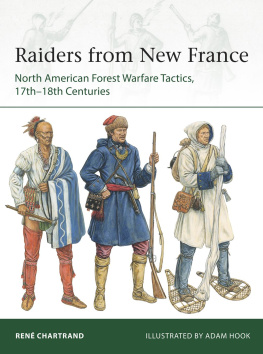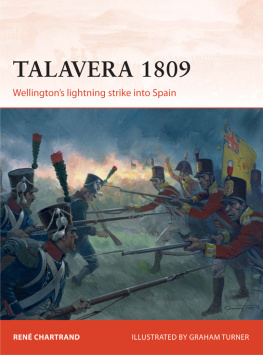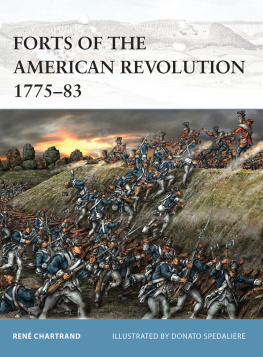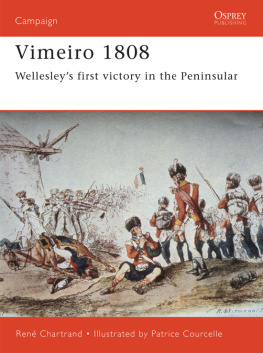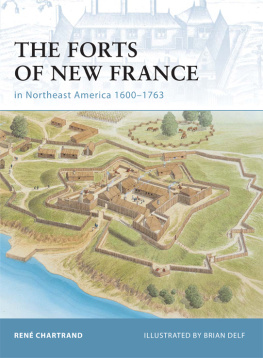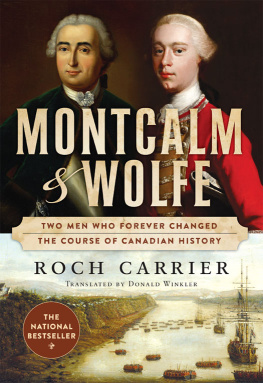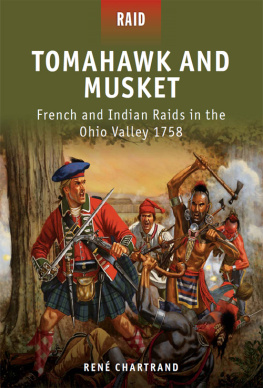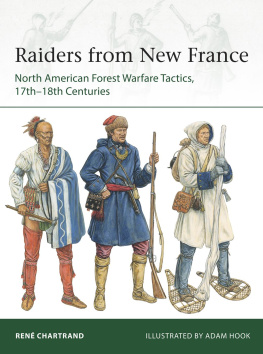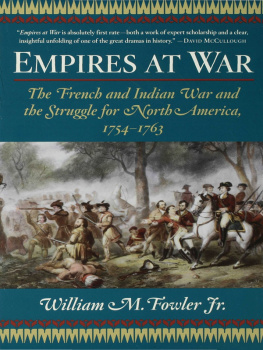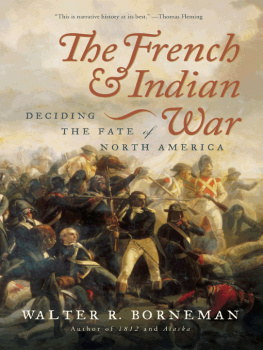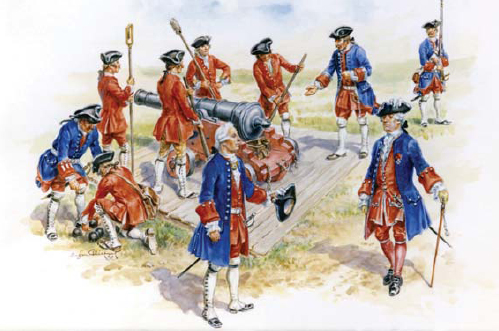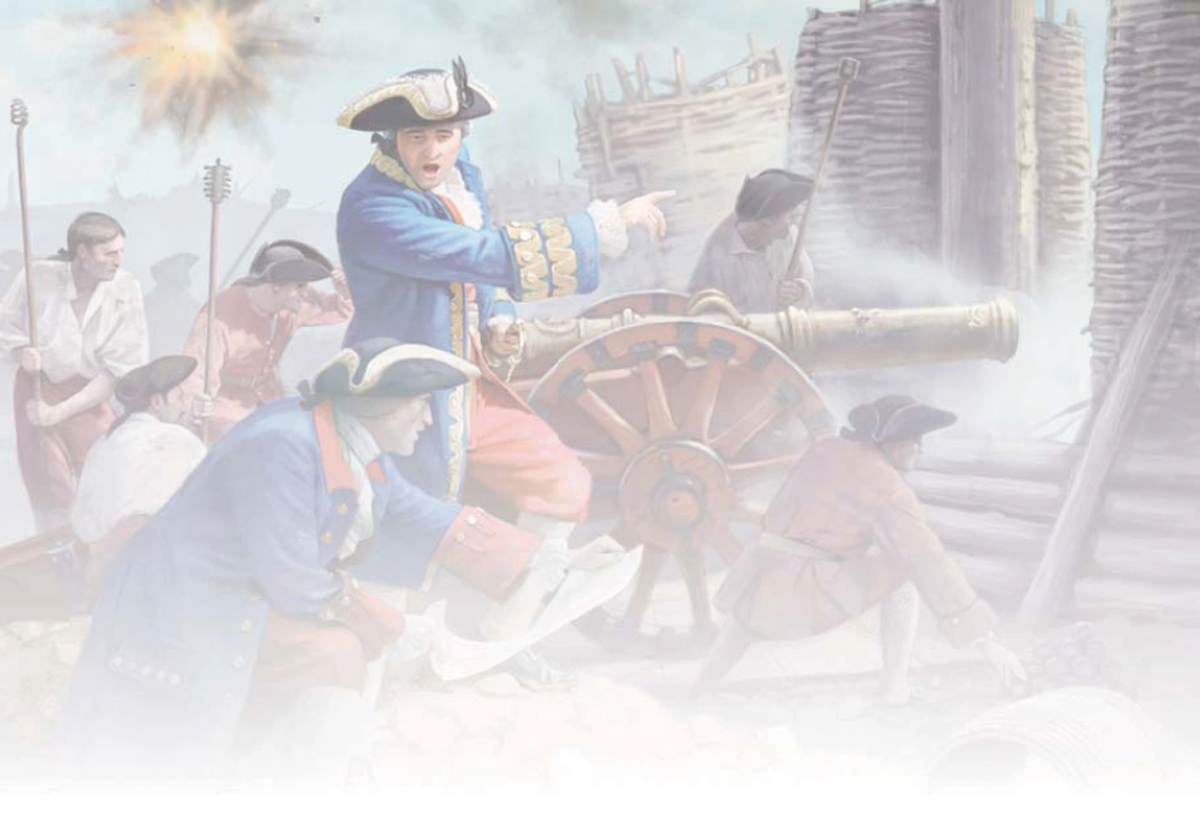MONTCALMS CRUSHING BLOW
French and Indian Raids along New Yorks Oswego River 1756
REN CHARTRAND
CONTENTS
INTRODUCTION
Although it has been the subject of a few pages or a chapter in every book on the Seven Years War in North America, this work appears to be the first substantial study on Oswego and its fate in 1756. That year, it was one of the most important military places on the continent. The British and Americans wanted to use it as a staging point for their planned attacks on the French forts on Lake Ontario that would culminate in their complete control of that great waterway. The French wanted to conquer Oswego to deprive the Anglo-Americans of their post on the Great Lakes. The stakes were high. If the British were successful, part of New Frances fur trade was ruined and the Frenchs influence with their allied Indian nations would be seriously reduced. If the French had the upper hand, it was the Anglo-Americans trade and influence with the Indians that would be seriously, perhaps fatally, affected.
The defense capacity of Oswego was bolstered; from 1755, new forts were built and the garrison greatly strengthened. However, largely through the administrative ineptitude of General William Shirley, who was the British commander-in-chief in North America and governor of Massachusetts, there were serious problems sending enough supplies from Albany to Oswego. The line of communication was very long and went largely through wilderness before reaching Oswego. This was a major Achilles heel that had not gone unnoticed by Governor General Vaudreuil of New France. A seasoned officer born in Canada, he perceived the weakness in the link between Albany and Oswego and resolved to test it. This is why our work gives a fairly elaborate account of the raid and destruction of Fort Bull in March 1756 since it proved the weakness of that link. It also demonstrated yet again the French and Indian superiority in wilderness warfare.
Could a raid on a grand scale, unseen as yet in North America, be organized and take Oswego, Vaudreuil wondered? When General Montcalm arrived in Canada in June 1756, he was soon tasked with carrying out such a mission. It would involve taking over 3,000 men, including allied warriors, over a vast expanse of wilderness traveling in a fleet of at least 200 boats called bateaux that would move discreetly in order not to be detected. This must have initially seemed unrealistic, but, after a while, even the French metropolitan officers warmed to the idea enough to give it a try. To take Oswego would really be a feat, as this was no small stockade affair. It had several forts and a train of siege artillery had to be brought along. This might have initially seemed like an impossible task, but many Canadians were employed transporting huge quantities of trade goods across part of the continent; transporting artillery and large quantities of ammunition and supplies of all sorts was possible for these men. The Oswego operation has usually been called a campaign but, as will be seen, it was really more of a massive raid, the likes of which had never been seen before.

Major-General Louis-Joseph de Montcalm, Marquis de Saint-Vran, but commonly called Marquis de Montcalm, c.1755. (Officers Mess, Royal Military College of Canada, Kingston. Authors photo)
ORIGINS
The competition for Lake Ontario
From the early 1720s, American fur traders became very interested in the Oswego area as a fine place for meeting Indians from the more westerly Iroquois nations, notably the Onondagas. By about 1724, this had taken the form of a seasonal event where traders would spend part of the summer trading with Iroquois. There was nothing permanent erected by the American traders, only temporary bark or log huts.
Nevertheless, the French soon learned and were considerably worried about these activities. In terms of trade with the First Nations, the American traders at Oswego were obviously diverting business that would normally have gone to Fort Frontenac. But it was probably the geostrategic implications that drew the greatest concern of senior officials in Quebec City. Up until then, Lake Ontario still called Lake Frontenac on some maps had been a French lake. Now, the ongoing activities of the American traders at Oswego each summer upset the security and dominance the French had enjoyed since the 17th century. Normally, the government of New France acted militarily against interlopers, either directly or through allied Indians, but the Oswego case was more complex. These numerous traders were British subjects and Oswego was also claimed to be within the realm and protection of Great Britain although, in practical terms, the Iroquois nation of the Onondagas was the real lord of the area, and was generally considered an ally of the Anglo-Americans. Furthermore, Britain and France were enjoying a peaceful period that no one in Versailles or London really wished to upset, so a military action and occupation of Oswego by French troops was out of the question.
Diplomacy and adopting measures to hem in the American traders at Oswego appeared as the immediate solution. The Chevalier de Longueuil was sent to meet with Onondaga leaders, but they remained vague and non-committal. The trade was no doubt much to their liking and it was increasing. In 1724, a path was cleared by the American traders at the Oneida Carry to facilitate the flow of trade goods coming from Albany by the Mohawk River. Goods would now reach Oswego more easily. For the French, the situation was not getting any better as years passed and, by 1726, they obtained leave from the Iroquois Seneca nation to build a House of Peace farther west, at Niagara, to prevent the Anglo-Americans from penetrating any farther into Lake Ontario. The new French fort at Niagara had the usual stockade wall of any outpost, but what was rising inside was a large three-story-high stone machicolated house that would have a detachment of regular troops. This would secure the entrance into Lake Ontario from Lake Erie. With Fort Frontenac, which also had a regular garrison, guarding the lakes eastern access into the St Lawrence River, the French controlled the way in and out of the lake, except at Oswego.
The French and British forts
New York colony governor William Burnet received news of the French fort being built at Niagara. It was clear that Oswego now had to be secured and made into a more permanent post. Britain too had to show the flag at Lake Ontario, as failure to do so could entail losses in trade and prestige with the Iroquois confederacy. In late 1726, Burnet obtained money from the New York legislature to build a fort at the mouth of the Onondaga River and, by the spring of 1727, he sent some workmen to build a stone house of Strength at a place called Oswego (DRCHSNY, V). To garrison the new fort, Governor Burnet ordered one of the four independent companies posted in the province of New York to take its quarters at Oswego. This was a company of British regular troops consisting of one captain, two lieutenants and 60 enlisted men. The men were armed with muskets, bayonets and swords, and were uniformed in red coats with blue cuffs and linings. From 1730, the facings were changed from blue to green (WO 71/6).


